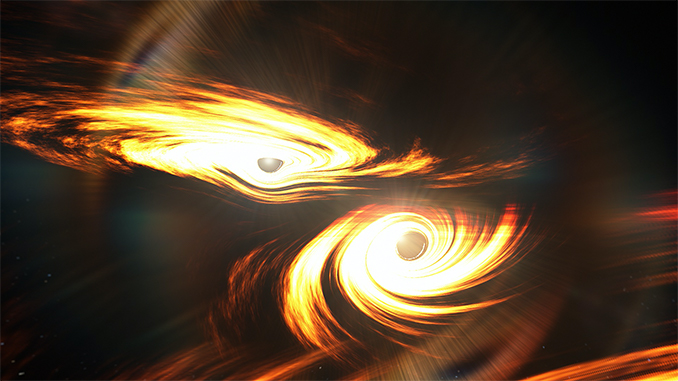
This discovery implies that there ought to be many dormant black holes spread across the Milky Way galaxy, the home of Earth.

Australian astronomers have discovered one of the biggest black hole jets in the sky. Spanning more than a million light years from end to end, the jet shoots away from a black hole with enormous energy, and at almost the speed of light.

Scientists have proved that the source of high-energy neutrinos is a special kind of supermassive black holes called blazars.

Located in the bright constellation of Centaurus, this luminous cosmic beast is more than 500 times larger than the supermassive black hole at the centre of our own galaxy.

Astronomers have discovered two large, mysterious objects blasting out of the brightest black hole in the known Universe.

More than three years after the release of the first-ever image of a black hole, scientists from the Event Horizon Telescope (EHT) shared an image of Sagittarius A* — the supermassive specimen sitting at the center of our own Milky Way galaxy.

Now, astronomers have officially found another elusive object that has long been theorized and that was first reported on back in 2009 but has never directly detected – a rogue black hole.

The Event Horizon Telescope (EHT) collaboration, who produced the first ever image of a black hole, has revealed today a new view of the massive object at the centre of the M87 galaxy: how it looks in polarised light.

The international team find that rather than the conventional formation scenarios involving 'normal' matter, supermassive black holes could instead form directly from dark matter in high density regions in the centres of galaxies.

Recently The Low Frequency Array released the first data on its sky survey. They have only mapped 4% of the northern sky so far, but have already mapped 25,000 supermassive black holes.

Researchers using the Hubble Space Telescope observed one of the closest globulars to Earth – NGC 6397 and were surprised to find signs of multiple stellar-mass black holes.

It is thought that the upper mass limit for galactic black holes is around 100 billion solar masses, but new research suggests the mass limit could be much higher - more than a million times greater than the largest galactic black holes.

Astronomers are studying black holes that could have formed in the early universe, before stars and galaxies were born. Such primordial black holes (PBHs) could account for all or part of dark matter.

The 2020 Nobel Prize in Physics was awarded to Sir Roger Penrose and to Reinhard Genzel and Andrea Ghez for their discovery of the supermassive black hole at the Center of the Milky Way.

Gravitational wave observatories have detected ripples in space-time that indicate the merger of two black holes with 85 and 65 solar masses. The result was a single black hole with 142 times the Sun’s mass.